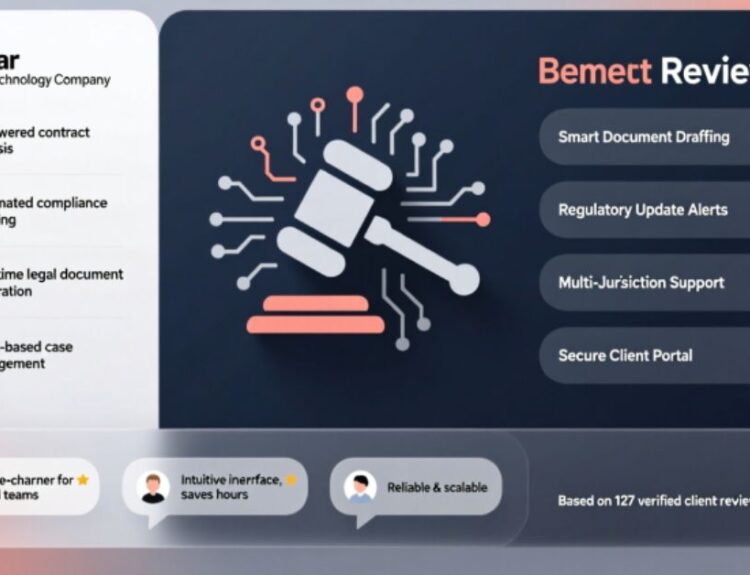Stichting Bouwresearch, also known as SBR, has long been a key institution in the Dutch construction sector, known for its dedication to advancing innovation, sustainability, and efficiency within the industry. Since its inception in 1959, SBR has played a critical role in shaping the way buildings are designed, constructed, and maintained. Through its extensive research initiatives, collaborations with key stakeholders, and the development of standards and guidelines, Stichting Bouwresearch has significantly influenced the construction industry, both in the Netherlands and internationally. This article explores the legacy, research, and lasting impact of SBR on the construction industry.
Historical Background
Stichting Bouwresearch was founded in 1959 with the mission of stimulating and coordinating research aimed at improving construction methods. The organization initially worked on developing solutions to problems the industry faced, and it grew in prominence as the need for scientific and evidence-based construction practices increased in the post-World War II era.
The first chairman of SBR was Herman Witte, a former minister of the Netherlands. Under his leadership, the organization played a vital role in integrating more scientific research into the construction industry. For many years, SBR acted as a bridge between research and practical implementation, ensuring that new findings reached construction professionals and informed the building practices of the time.
In 2003, the foundation adopted the name Stichting Bouwresearch (SBR) and continued its research and development efforts, focusing on various aspects of construction, including materials, safety, energy efficiency, and sustainability. This period also marked a shift in the organization’s goals, as SBR increasingly turned its focus to new technologies, energy-efficient designs, and sustainability efforts in response to the growing environmental concerns of the 21st century.
In 2013, Stichting Bouwresearch merged with CURnet, a network for construction and civil engineering professionals, to form SBRCURnet. This new organization combined the strengths of both foundations, giving it more resources and a wider network to continue its work. It became an even more influential body in shaping the standards and practices in the Dutch construction industry. The headquarters were located at The Bouwcampus, a collaborative hub situated at the Delft University of Technology, ensuring close ties between academia and the practical world of construction.
However, after a period of financial difficulties, SBRCURnet ceased to operate as an independent entity in 2017. Following the cessation of SBRCURnet’s activities, its roles and responsibilities were divided among other organizations. The CROW organization took over the civil engineering aspects of the work, while ISSO assumed responsibility for the building and installation technology research.
Despite these transitions, the legacy of Stichting Bouwresearch continues to influence the industry today, with its research, publications, and best practices still guiding construction projects across the Netherlands and beyond.
Mission and Objectives
The primary mission of Stichting Bouwresearch was to enhance the overall quality of the construction industry by providing reliable knowledge and practical solutions. SBR’s work spanned a wide array of areas, including developing guidelines for best practices, improving the energy efficiency of buildings, and fostering sustainable practices across the entire sector. The organization sought to make research accessible and relevant to professionals working in all sectors of the construction industry, including architects, engineers, contractors, and policy-makers.
SBR focused on translating complex, academic knowledge into practical tools that professionals could use in their daily work. These tools included guidelines, standards, and publications, many of which continue to be referenced in construction projects today. Furthermore, the organization aimed to foster collaboration among industry professionals to ensure that research and knowledge could be applied on the ground.
One of SBR’s most significant objectives was to improve safety standards across the construction industry. This included the creation of safety guidelines and the development of risk assessments that could be used to mitigate accidents and ensure that construction workers were working in safe environments.
Another key objective was to promote sustainability within the industry. The built environment plays a major role in carbon emissions, resource consumption, and environmental degradation. SBR was at the forefront of promoting the use of sustainable materials, energy-efficient construction techniques, and designs that minimized the environmental impact of buildings throughout their life cycle. This work proved particularly important in light of the growing global concerns around climate change.
Also read this post: Super Safety Trigger: Enhancing Security with Innovative Technology
Key Areas of Research and Impact
Stichting Bouwresearch focused its research on several key areas that were crucial for the continued development and improvement of the construction industry. Some of the most important areas of research included:
- Sustainability: As environmental concerns became more pressing, SBR increasingly focused on promoting eco-friendly building practices and materials. The organization conducted research on how buildings could be designed and constructed with minimal environmental impact, from reducing energy consumption to using sustainable, renewable materials.
- Energy Efficiency: SBR also worked to develop methods and systems that would help buildings achieve higher energy performance. This included exploring new insulation materials, energy-efficient technologies, and heating and cooling systems that would reduce a building’s reliance on non-renewable resources.
- Safety Standards: Ensuring the safety of construction workers and the structural integrity of buildings was another priority for SBR. The organization developed numerous safety guidelines and protocols, ranging from scaffolding construction to the use of machinery and equipment on job sites.
- Technological Innovation: SBR was also involved in researching new technologies that could revolutionize the construction process. This included the adoption of computer-aided design (CAD) tools, building information modeling (BIM), and new construction materials that could enhance the durability and efficiency of buildings.
- Building Regulations and Standards: Another critical area of SBR’s work was its involvement in the creation of national and international standards for construction practices. These standards provided a basis for ensuring that buildings were constructed in a consistent, safe, and sustainable manner. Many of the standards developed by SBR became benchmarks in the Dutch construction industry.
- Circular Construction: SBR also explored how the construction industry could shift towards circular economy principles, where resources are reused, and waste is minimized. This includes researching ways to deconstruct buildings in a way that allows materials to be repurposed rather than disposed of, reducing the demand for new raw materials and helping to close the loop in the building lifecycle.
Notable Publications and Guidelines
Stichting Bouwresearch was known for publishing a series of influential publications and guidelines that were widely used across the construction industry. Some of the most notable include:
- SBR Trillingsrichtlijn (Vibration Guidelines): This series of publications offered a set of measurement and assessment guidelines to evaluate the damage and nuisance caused by vibrations during construction activities. These guidelines provided construction companies and engineers with standardized methods for assessing vibration risks to buildings and surrounding areas, improving the overall safety and predictability of construction projects.
- SBR Richtlijn Steigers (Scaffolding Guidelines): Safety in scaffolding was another critical area of focus for SBR. The organization developed comprehensive guidelines for the design, construction, and use of scaffolding in the construction industry. These guidelines helped to ensure that scaffolding systems were safe and effective, reducing the risk of accidents and improving the overall safety of construction sites.
- SBR Richtlijn Geluid in Gebouwen (Sound Insulation Guidelines): This set of publications focused on the acoustic performance of buildings, particularly regarding sound insulation. The guidelines helped architects and engineers design buildings that minimized noise pollution, ensuring better living and working environments for occupants.
- SBR Richtlijn Brandveiligheid (Fire Safety Guidelines): Fire safety is a top priority in construction, and SBR developed fire safety guidelines that set standards for fire-resistant building materials, construction methods, and emergency preparedness. These guidelines helped shape fire safety regulations in the Netherlands and influenced international fire safety standards.
- SBR Richtlijn Energieprestatie (Energy Performance Guidelines): SBR also focused on energy efficiency, creating guidelines to help improve the energy performance of buildings. These guidelines were crucial in guiding the construction industry towards greener, more energy-efficient practices, and they provided a framework for integrating renewable energy technologies into building designs.
Impact on the Construction Industry
Stichting Bouwresearch’s impact on the Dutch construction industry cannot be overstated. Through its research, publications, and advocacy, SBR played a key role in shaping the sector’s growth and transformation. Some of the most significant contributions include:
- Standardization: SBR’s work in developing guidelines and standards has led to greater consistency in construction practices across the Netherlands. These standards have become benchmarks in the industry and are widely used in construction projects today.
- Education and Training: SBR’s publications, research findings, and guidelines have been used as educational tools to train construction professionals. Many of the guidelines have been incorporated into curricula for architecture, engineering, and construction programs, helping to educate the next generation of construction professionals.
- Policy Influence: SBR’s research also played an important role in shaping construction policies and regulations. The organization’s findings helped inform national building codes and regulations, particularly in areas related to sustainability, energy efficiency, and safety.
- Promoting Sustainability: Through its research on sustainable construction practices, SBR helped to position the Dutch construction industry as a leader in environmental responsibility. The organization was instrumental in promoting energy-efficient building designs and the use of sustainable materials, helping to reduce the environmental footprint of the construction sector.
Transition and Legacy
In 2017, SBRCURnet, the successor to Stichting Bouwresearch, ceased to operate as an independent entity due to financial difficulties. However, the core activities of SBR have not been lost. CROW, an organization dedicated to civil engineering, took over the engineering-related activities, while ISSO, a knowledge institute specializing in building and installation technology, assumed responsibility for SBR’s focus on the built environment. These organizations continue to carry forward SBR’s legacy by using its research and publications to guide the current and future direction of the construction industry.
While the organization itself no longer operates as it once did, the contributions of Stichting Bouwresearch continue to be felt today. Its research, standards, and best practices have had a lasting influence on the construction sector, and its work is still referenced by professionals working in construction projects of all types.
Conclusion
Stichting Bouwresearch’s contributions to the construction industry have left an indelible mark on the sector. Through its dedication to innovation, safety, sustainability, and efficiency, SBR helped shape the direction of the Dutch construction industry, and its legacy continues to influence modern building practices. While the organization itself may no longer operate independently, the knowledge and best practices developed by SBR remain a vital resource for professionals across the construction sector, ensuring that the industry continues to evolve in an environmentally responsible and sustainable manner.







